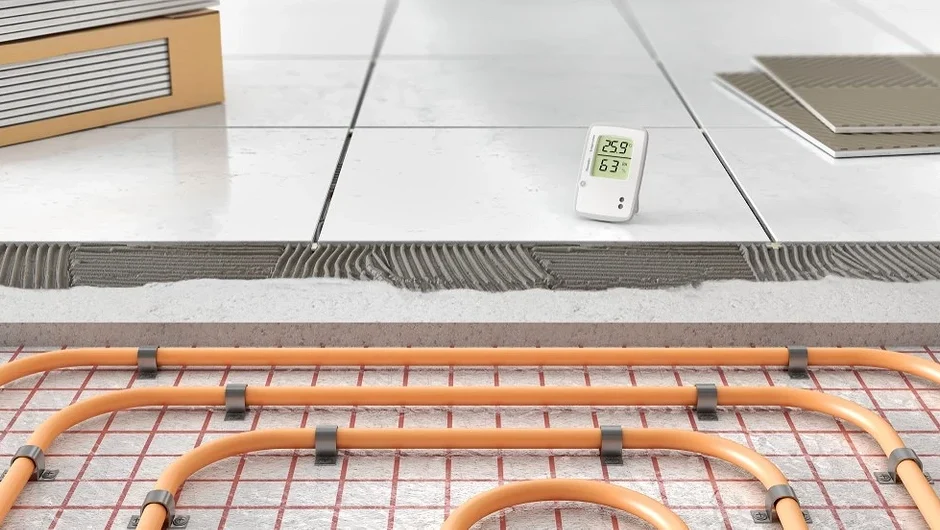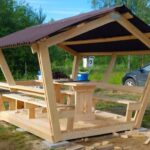We talk about the advantages and disadvantages of different underfloor heating systems that can be laid under tiles. We give useful advice on choosing and offer a small rating of the best manufacturers of electrical systems.
Ceramic cladding is an almost ideal floor covering. It is strong, waterproof, durable and beautiful. However, ceramics are cold materials. While it may even be pleasant to step on a cool surface in the summer, you don’t want to do this in the fall or winter. A good solution is to install a heating system under the cladding. Let’s figure out which warm floor is better to lay under the tiles.
Advantages and disadvantages of different underfloor heating systems
The ceramics are mounted on a screed, under which the heating system is placed. For laying under the cladding, different types of heaters are used. Let’s look at the advantages and disadvantages of each of them to determine which warm floor is best to choose for tiles.
Water heating
The heating system is assembled from pipes that are laid in a wet or dry screed. Heated coolant is supplied through them. This could be water or antifreeze. The last option is relevant if there is a danger of liquid freezing in the pipes. Communications are connected to a heating boiler, which provides heating of the coolant.
Pros
- Economical heating. Energy costs are reduced by 25-60% compared to radiator heating or electric counterparts.
- Safety. Lack of electromagnetic field generated by electric heaters. Pipes with heated coolant are hidden in the thickness of the screed, even if they break through it is impossible to get burned.
- High inertia. A heated surface retains heat for a long time and slowly releases it into the air.
Minuses
- Complex calculations and installation. The structure is a multi-layer “pie” that must be properly designed and installed. Errors will lead to inefficient operation and significant heat loss.
- You cannot set fine temperature settings, only approximate values. There is no way to temporarily turn off some part of the room from heating.
- In the event of an accident, unpleasant consequences are possible when water goes into the foundation or floods the room below.
- To eliminate damage, it is necessary to dismantle the structure. Otherwise, it is impossible to get to the pipes.
- It is prohibited to connect water heating to centralized heating and install it in apartment buildings.
- Significant initial costs for the purchase of components and installation. True, later they completely pay off.
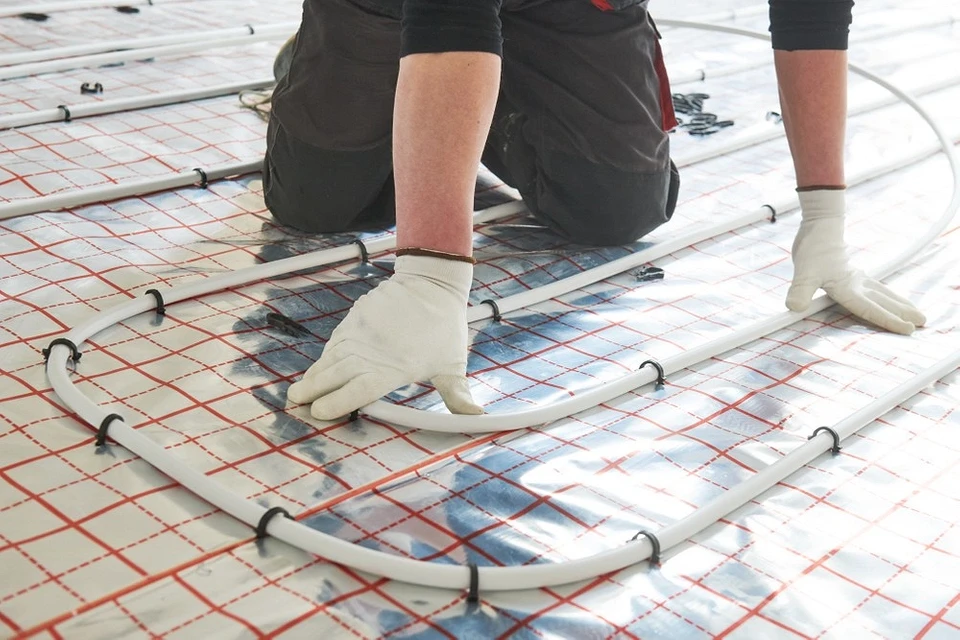
Electrical systems (cables and mats)
There are two types. In the first, the heating is assembled from a heating electric cable, which is laid on the base in a zigzag, fixed in this position, and then filled with a concrete screed. When power is applied, it heats itself and heats the concrete. In the second there are heating mats. This is the same cable, but laid on a mesh backing and secured to it. It is more convenient to work with mats and easier to carry out all the necessary calculations, because the power of each section of the thermostat is already known, and there is no need to calculate it.
pros
- Relatively simple calculation and uncomplicated installation. Only the heating cable requires laying in a concrete screed, and its height can be minimal. For thermomats, it is permissible to lay the cladding directly on the mesh. You can fill the mat with a thin layer of self-leveling mixture before laying out the tiles.
- Low initial costs and a minimum set of components.
- Possibility of quick activation at any time. To raise the temperature in the room, you do not need to heat the boiler, just connect the power supply.
- Wide range of possibilities for adjusting and programming the system, including remote configuration from a smartphone. If necessary, you can turn off certain areas of the room from heating.
- The emergency situation does not lead to significant damage and is quite easily eliminated. Most often this is replacing a burnt wire.
Minuses
- For normal operation, high-quality wiring is required. Heater power is about 80-150 W per square meter. m, and this is a significant additional load on the home network.
- High energy costs.
- If installed incorrectly, there is a risk of electric shock or fire.
- The presence of electromagnetic radiation during the operation of an electric heater.
These are common shortcomings. For a heating cable, a significant disadvantage is the need to install a concrete screed to protect the wire from possible damage. Considering that it is enough to lay a layer of concrete 30-40 mm high, this is not the most difficult option.
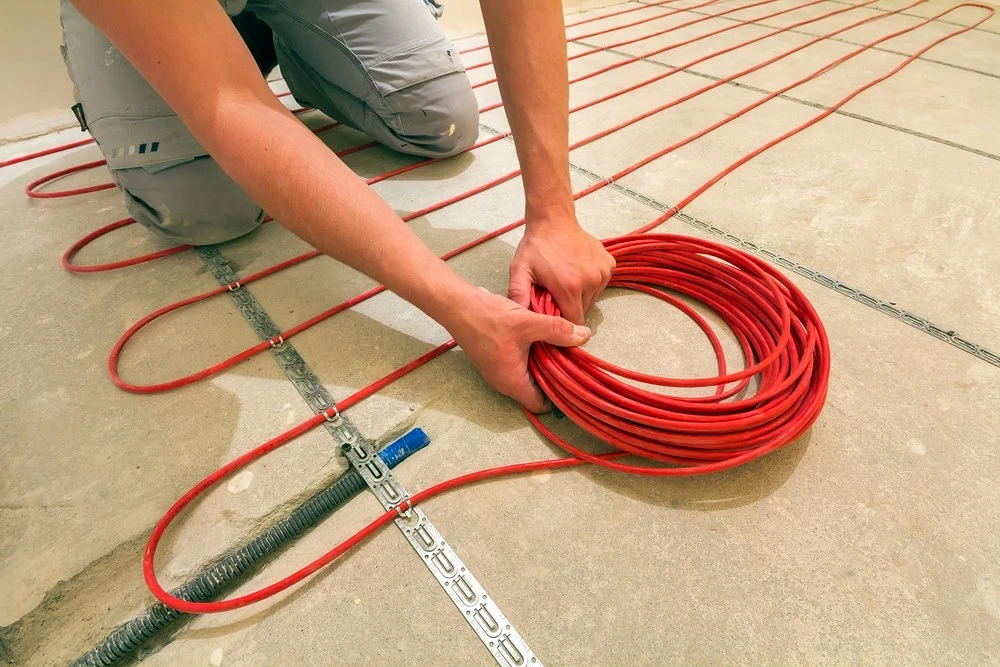
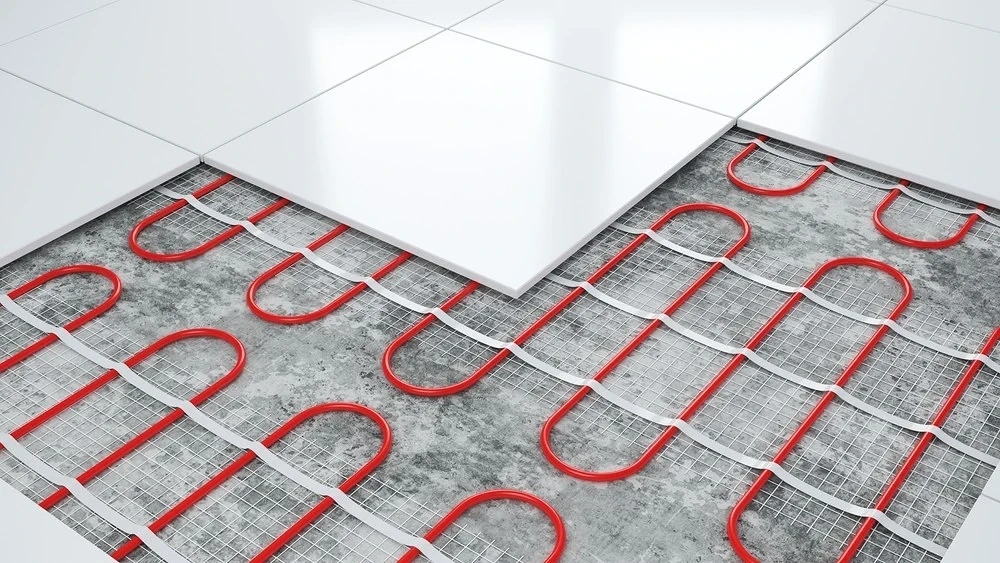
Infrared heating
This is a type of electrical system with a different operating principle from a cable. IR emitters are attached to the film base, which generates infrared radiation that is safe for humans. It rises and accumulates in the floor covering, which heats up and begins to release heat into the air. The pros and cons of infrared flooring are generally similar to all electrical systems.
But there are some nuances. Initially, heating films were developed for dry installation. They were laid under laminate, carpet, or linoleum. Film floors can also be laid under tiles, but then additional work is necessary: waterproofing and a rigid base under the cladding are installed on top of the film base since placing the film under a wet screed is strictly prohibited. You cannot install it under a layer of tile adhesive. In addition, the film must be laid only on a flat base, so work on its preparation is also required.
The film floor was designed for dry structures, so grounding was not initially provided. Only a small part of the film is produced with grounding. Its price is significantly higher than average. The areas where the power wire and the film heater are connected are not sealed and are therefore sensitive to moisture. If it hits, the system will fail.
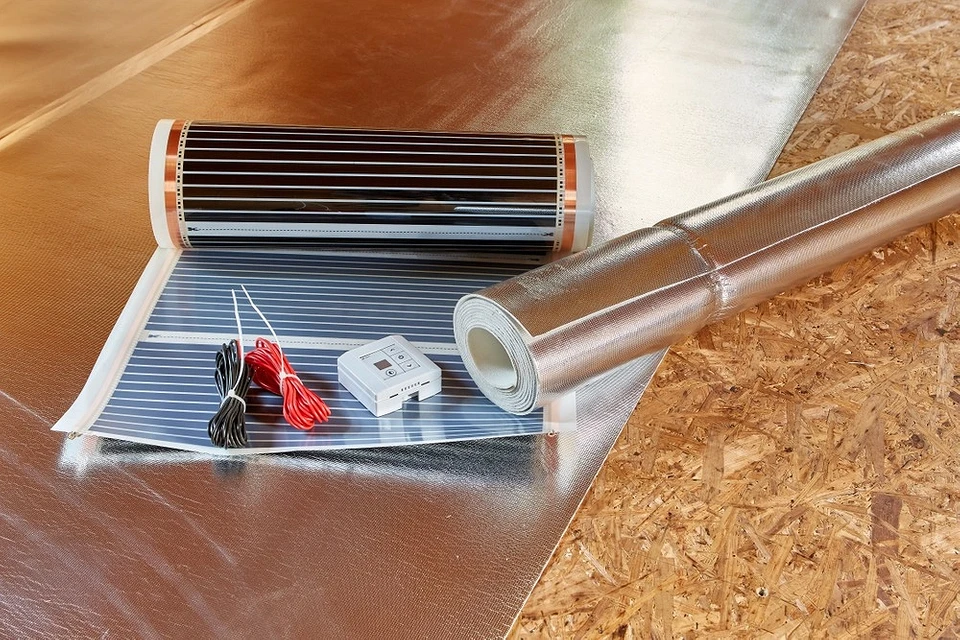
To make it easier to decide which heated floor to use under the tiles, we have compiled a comparison table for all possible options.
| Water | Cable | Thermomat | Infrared | |
|---|---|---|---|---|
| Initial costs | High | Small | Small | Fine-tuning, remote control, and partial shutdown possible |
| Cost of operation | Low | High | High | High |
| Settings and adjustments | Fine adjustments are not possible, partial disabling is not possible | Prohibited for use in multi-story buildings | Fine-tuning, remote control and partial shutdown possible | Simple. The thermostats are unfolded and connected. Cladding is laid on top |
| Assembly | Difficult. The structure is assembled from pipes and connected to the heating boiler. A high screed is being installed | Relatively simple. The cable is laid in a zigzag, secured, and filled with a thin screed | Simple. The thermomats are unfolded and connected. Cladding is laid on top | Difficult. The rough base is leveled and the film is laid out. Waterproofing and a rigid base for the tiles are being installed |
| Restrictions on use | Prohibited for use in multi-storey buildings | No | No | It is not advisable to install in damp areas. Do not place under screed or tile adhesive |
What to consider when choosing
You need to choose the appropriate option taking into account several other factors. Let’s list them all.
- Possibility of laying screed. If the ceilings are low or the ceilings are old and fragile, a high and heavy layer of concrete cannot be poured. In this case, it may be worth choosing thermomats or film heaters.
- Functionality of the heating coating. It is used as main or additional heating. This determines what power of warm floor to choose for the tiles. In the first case, a heating cable with a power of 180-220 W per square meter is suitable. m or water design. In the second – low-power thermomats or cable.
- Housing type. For apartment buildings, only warm electric floors are allowed. In a private home, the choice is unlimited.
- The cost of the structure and its further operation. The right choice can only be made taking into account several factors: energy consumption and cost, labor intensity and cost of installation, cost of components. It may turn out that cheap systems will end up costing much more.
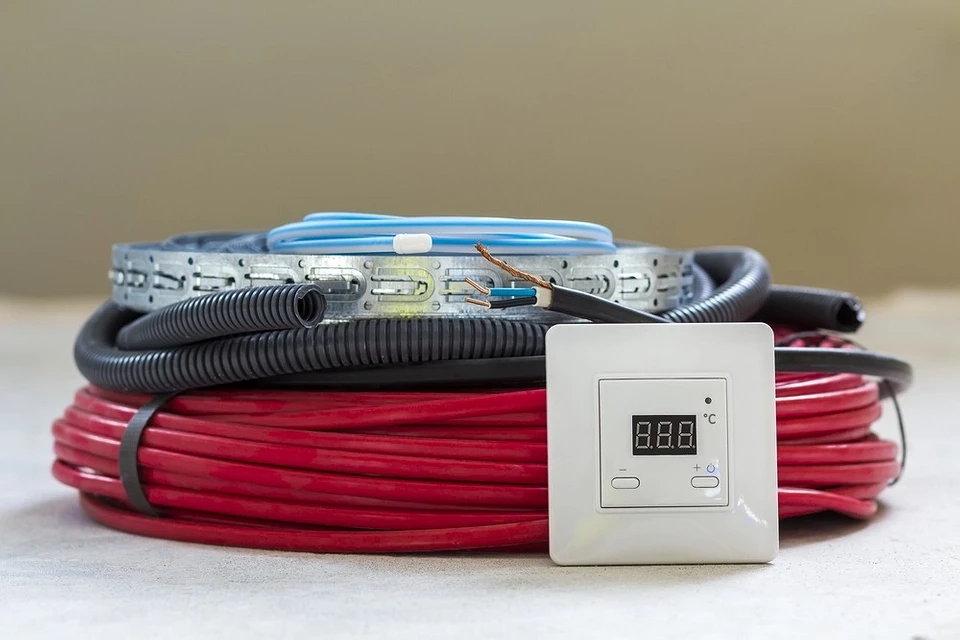
Mini-rating of manufacturers of heated floors for tiles
Don’t skimp on components. An attractive price for equipment from an unknown Chinese manufacturer can result in significant costs for repairs or reinstallation of a non-working system. Therefore, it is advisable to choose products from well-known brands.
Conclusions
Different types of heating can be installed under the cladding. Water structures are economical and durable. They are good for private houses since their installation in multi-apartment buildings is prohibited. To service them, you need an autonomous heating boiler; connection to centralized heating is carried out only with special permission. It is optimal to install the structure at the construction stage: installation is too “dirty” and complex.
For an apartment, the best choice is an electric floor. Thermomats are suitable for rooms with low ceilings since they take up a minimum height. The cable is especially good for rooms with complex shapes: it easily “bypasses” any obstacles. IR film can also be laid, but only if an additional rigid base is installed under the tile. This complicates and increases the cost of the process, so it is better to choose other options.

